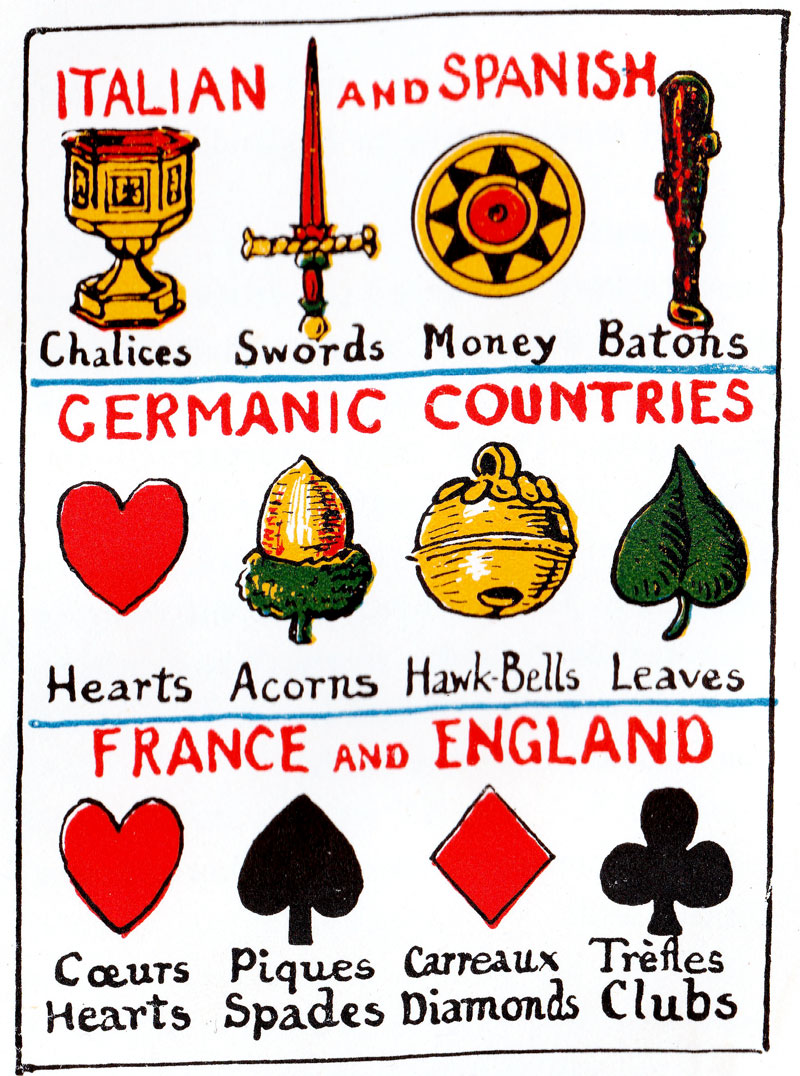Suit Systems, National Types and Patterns

Above: Illustration showing traditional suit symbols from Italian, Spanish, Germanic, French, and English playing cards.”
By around 1500 three main suit systems had evolved: Latin (including Italian, Spanish and Portuguese); Germanic (German and Swiss) and French (which has become the International or 'Anglo-American' suit system). At the same time the court hierarchies were becoming standardised, although distinctive in different regions, known as ‘patterns’.
Some of the suit symbols may have had a semi-symbolic significance (e.g. cups, coins, hearts, batons, pomegranates) or were adapted from a different language, others a reflection of popular culture at the time; but some students like to see a religious, social or political meaning in the symbols.
These suit systems and court hierarchies became the basis for various Standard National patterns, or National Types, which were associated with specific regions or tax jurisdictions.
Many of these have remained unchanged for centuries, being handed down through the generations, preserving their archaic, medieval characteristics. Others have evolved into modern types, perhaps as a self-affirmation of national identity in countries which have recently regained independence from imperial rule (see example). Indeed, as a result of globalisation and use of computers, standard playing card designs are becoming more uniform on the one hand, but with greater opportunities for customisation or originality on the other hand (i.e. non-standard).


